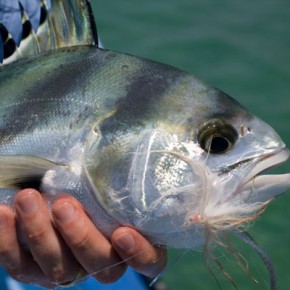Ixtapa-Zihuatanejo is almost centered in an area on the West Coast of Mexico known as the Costa Grande…
This approximate 200 mile stretch of coast is renowned as a world class fishery. Many tourists come here to sample it, because Ixtapa-Zihuatanejo is a great family destination, where the casual angler can fish with world class captains for a pittance of what it would cost in other world class destinations.
Generally assumed to be a world class fishery for sailfish and blue marlin in the winter months, few people know about the incredible fishery the Costa Grande has for roosterfish, especially from late May through December. We are talking about record sized fish on any line class you want to fish with. Because the roosterfish potential is relatively unknown, few fishermen are coming here specifically looking for world records. Most fish caught here are caught by the casual fisherman. Many “could have been” world records have been either released, disqualified because the rod was handled by the captain or deckhand, or eaten. It is a learning curve. The casual fisherman rarely gets many chances to fish for roosters, and usually lets the captain or deckhand set the hook for them when using conventional gear. This automatically disqualifies the fish. To qualify for a world record only the angler may touch the rod from the moment the hook is set until it is in the boat.
Plus, most of the captains here don’t yet know enough about what to do when encountering a potential record, to understand the specific rules. There are three captains here, who have earned reputations as being excellent roosterfish captains, and are beginning to understand what needs to be done to make a potential record catch. Adolfo on the panga Dos Hermanos is the most noted, with Cheva on the Dos Hermanos II, and Arturo on the Janeth being right behind. But even they occasionally set the hook for the inexperienced client, and that has shot themselves in the foot for world records the instant the hook is set.
Some fairly recent examples of this was when Adolfo’s deckhand set the hook on a rooster that was well over one hundred pounds, using thirty pound line and a surface popper. Another was when Cheva had a fly fishing client, who set his own hook, but the fish died. The angler was experienced and usually releases all of his roosters; however this one had the double hook setup down in the gills. After it lay for ten hours in the hot tropical sun they finally decided they should weigh it. There is no doubt it would have surpassed the current twenty pound tippet record, but in this case the angler was unaware of what he had caught. Between the three of the above mentioned captains, on conventional gear, they catch several sixty-five pound plus monsters every year.
When I fly fish for roosters with clients, I always make them aware of the possibility of a record. I am the IGFA Representative for this area and I always check their class leaders, bite tippets, and connections. There is no need to have lost a chance for a record the instant you make the cast, so if the leader is not IGFA legal, we change it. If you are serious about a world record, join the IGFA and study up on the regulations pertaining to the type of fishing you will be doing. Then come on down here to the Costa Grande, and you will have as good of a chance, or probably better, to catch your record(s) here as you would have anywhere in the world, from Peru to the upper reaches of the Sea of Cortez.
Best time for Roosters
A lot of people do not come here in the summer months, which is the prime time for these huge roosters. This is mostly because it is the rainy season. Most people envision monsoon type rains, with few days available to get on the water. As Dave and Sarah saw, nothing could be further from the truth. Our normal rainfall comes at night. We have almost 350 days of sun a year, with only about six or seven days a year with rain and wind in the daytime that can cause a port closure. However, it is true some of our late evening rain storms can dump a lot of water in a short time, and this will send a tremendous volume of muddy water out of the coastal rivers—discoloring the coast line. Until the coastal water clears up again this does hurt our fishing for a day or two. But these intense storms do not come often.
What would the best month be to fish for roosters and your best chance for a record? June, July, November, and possibly December, would be the months with the least chance of discolored water, and high concentrations of fish. The month of May can be a bit early, but there will be a few roosters and fantastic jack crevalle action in this month. The months of August, September, and for a couple of weeks into October, can get a lot of hard rain, discoloring the coast line. December (if a cold water current does not move in) can be fantastic, not just with the local roosters but with fish being pushed down from colder water up North.
Generally the chance for a huge rooster is gone from about the first week in January, until they return in May.
-
Sarah Henry with her 8kg tippet record roosterfish. Photo courtesy of Ed Kunze.
-
Roosterfish. Photo by Douglas Atmore.
- Sarah Henry with her 8kg tippet record roosterfish. Photo courtesy of Ed Kunze.
- Roosterfish. Photo by Douglas Atmore.






